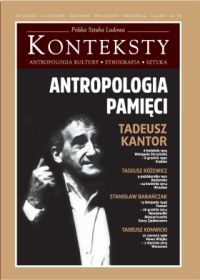Ambalaże Kantora
Kantor’s Emballages
Author(s): Dominika ŁarionowSubject(s): Fine Arts / Performing Arts
Published by: Instytut Sztuki Polskiej Akademii Nauk
Keywords: Tadeusz Kantor;theatre;
Summary/Abstract: In 1978 Tadeusz Kantor received in Cracow the prestigious Rembrandt Award known also as the “Painters’ Nobel Prize”. It is particularly noteworthy that he was awarded not for the achievements of the Cricot 2 Theatre but for his visual arts oeuvre, with particular emphasis in the emballage. The author wishes to solve a question concerning the nature of the emballage considering that it stirred such great interest inspired by Kantor across the world. The emballage was not a painting although even the artist placed it in this category. Technically, in the initial phase, it was an object (mainly an umbrella) attached to a canvas. Subsequently, it turned into a form of wrapping the protagonists of happenings in paper in order to pass into a different configuration concerning the merge of man and object. In the case of emballages of ideas paper bags contained abstract slogans referring to conceits from the range of the history of art. A separate category involves the works of other artists and wrapping oneself and one’s mother. An idea essential for the definition of the concept entails also the journey and the figure of the traveller carrying on his back the burden of all his accomplishments. An analysis of the development of the concept of the emballage makes it possible to discover a fine thread of connections with the gestures of other artists with creative biographies, such as Stanisław Wyspiański. The conducted analysis introduced Jan Matejko, Marcel Duchamp, and even Samuel Beckett. Despite the artist’s strenuous efforts, the homogeneous idea evades an unambiguous definition. The dynamic nature of the conception is partly the result of the artist’s activities, gradually introducing it into assorted domains and adapting it to planned gestures. At the end of his life Kantor declared: “I find the emballage very precious and do not wish to leave it at the mercy of dubious interpreters”.
Journal: Konteksty
- Issue Year: 308/2015
- Issue No: 1-2
- Page Range: 290-302
- Page Count: 13
- Language: Polish
- Content File-PDF

